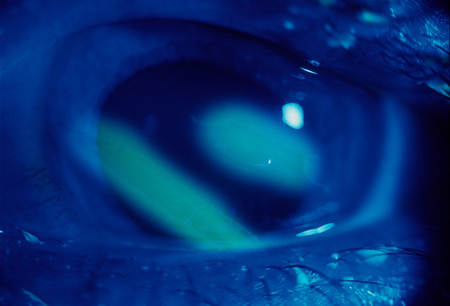Summary
Definition
History and exam
Key diagnostic factors
- presence of risk factors
- eye pain
- tearing
- photophobia
- blurred vision
- ciliary flush
Other diagnostic factors
- presence of foreign body
- red reflex
- corneal opacity
- rust ring
- blepharospasm
Risk factors
- eye trauma
- foreign body in the eye
- contact lens use
- working in the automotive industry
- lack of protective eyewear
- prior corneal abrasion
- deployment of airbag during motor vehicle collision
Diagnostic investigations
Treatment algorithm
Contributors
Authors
Christopher McStay, MD

Associate Professor of Emergency Medicine
Department of Emergency Medicine
Columbia University College of Physicians and Surgeons
New York
NY
Disclosures
CM declares that he has no competing interests.
Peer reviewers
Christopher Tedeschi, MD
Instructor in Clinical Medicine
Emergency Medicine Department
New York Presbyterian Hospital
Columbia University Medical Center
New York
NY
Disclosures
CT declares that he has no competing interests.
Rasik Vajpayee, MD
Chair of Ophthalmology
Corneal and Cataract Surgery
University of Melbourne
Melbourne
Australia
Disclosures
RV declares that he has no competing interests.
References
Key articles
Algarni AM, Guyatt GH, Turner A, et al. Antibiotic prophylaxis for corneal abrasion. Cochrane Database Syst Rev. 2022 May 27;5(5):CD014617.Full text Abstract
Watson SL, Leung V. Interventions for recurrent corneal erosions. Cochrane Database Syst Rev. 2018 Jul 9;(7):CD001861.Full text Abstract
Lim CH, Turner A, Lim BX. Patching for corneal abrasion. Cochrane Database Syst Rev. 2016 Jul 26;(7):CD004764.Full text Abstract
American Academy of Ophthalmology. Cornea/external disease summary benchmarks - 2023. Dec 2023 [internet publication].Full text
Reference articles
A full list of sources referenced in this topic is available here.
Use of this content is subject to our disclaimer
